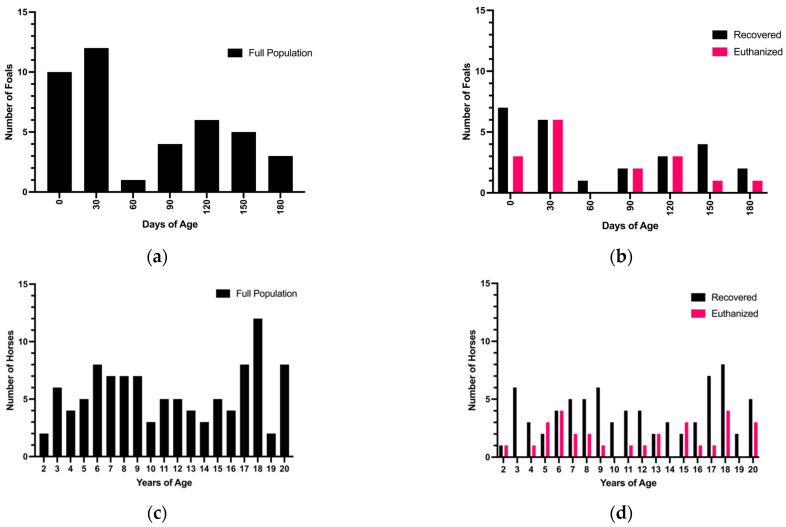Figure 2.
Age affects intraoperative decision in foals. (a) shows the frequency distribution of foals by days of age, binned by months. The full population of all foal cases collected was not normally distributed, and appears to be skewed right, with more younger foals presenting than older foals (mean = 67.34 days-of-age, median = 42 days-of-age) (Shapiro–Wilk normality test p = 0.0002, W = 0.8655). (b) When separated based on intraoperative decision, the population of foals euthanized during surgery was normally distributed, while the population of foals recovered from surgery was not (mean = 65.34 days of age, median = 40 days of age) (Shapiro–Wilk normality test p= 0.071, W = 0.8966 and p = 0.0021, W = 0.8490, respectively). (c) The full population of adult cases collected was not normally distributed, and appears to have a bimodal shape, with younger and older adults presenting more frequently than adult horses between 10 and 16 years of age (n = 20 horses between 17 and 18 years of age, n = 22 horses between 6 and 8 years of age) (Shapiro–Wilk normality test p < 0.0001, W = 0.9326). (d) When separated by intraoperative decision, both the population of adults that were euthanized in surgery and recovered from surgery were not normally distributed, (Shapiro–Wilk normality test p = 0.0175, W = 0.9127 and p = 0.0009, W = 0.9358, respectively).

